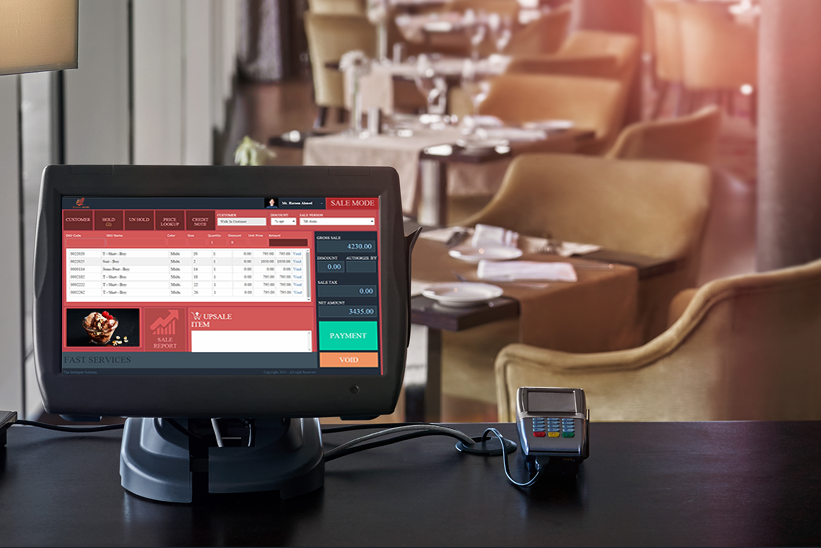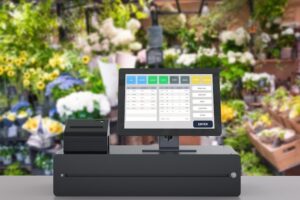5 Ways Restaurant POS Systems Increase Sales in 2025
In 2025, the restaurant industry is more competitive, tech-driven, and customer-focused than ever before. One of the most powerful tools...

In 2025, the restaurant industry is more competitive, tech-driven, and customer-focused than ever before. One of the most powerful tools driving revenue growth today is the Restaurant POS (Point of Sale) system. Far from being just a digital cash register, the modern Restaurant POS is an all-in-one platform that enables restaurants to streamline operations, enhance the customer experience, and most importantly—boost sales. Whether you run a food truck, fine dining establishment, or a chain of fast-casual locations, your POS system has the potential to become your most effective sales partner.
Here are five impactful ways that Restaurant POS systems are helping food businesses increase sales in 2025.
Here are five key ways POS systems are helping restaurants increase sales in 2025.
1. Data-Driven Upselling and Cross-Selling
Modern POS systems are no longer passive tools—they actively collect and analyze sales data in real time. Restaurants can use this data to optimize their menu, train staff for smarter upselling, and create personalized offers for customers.
How It Works:
- Smart Recommendations: AI-powered POS systems can suggest complementary items to staff during order entry. For example, when a customer orders a burger, the system may prompt the server to suggest adding fries or a drink combo, increasing the ticket size.
- Customer Purchase History: Integrated CRM tools in POS systems track repeat customers and their preferences. This enables tailored promotions, like offering a discount on a customer’s favorite dessert or alerting them to a new dish similar to past orders.
- Menu Engineering: Analytics dashboards help identify high-margin and best-selling items. Restaurants can use this information to highlight profitable dishes on digital menus or reconfigure the menu layout to guide customer choices.
Real-World Example:
A fast-casual restaurant in Toronto using a POS with built-in AI saw a 22% increase in average ticket value after implementing recommended add-ons based on past order combinations.
2. Faster Table Turnover with Mobile POS
In 2025, time is money—and nowhere is that truer than in the restaurant industry. The longer a table is occupied, the fewer customers a restaurant can serve. Mobile POS systems solve this by streamlining service, reducing wait times, and improving the customer experience.
Key Benefits:
- Tableside Ordering and Payments: Servers can take orders and process payments directly at the table using tablets or handheld devices. This reduces back-and-forth time and eliminates errors caused by manual input.
- Instant Kitchen Communication: Orders are sent to the kitchen immediately upon entry, speeding up food prep and reducing miscommunication.
- Contactless Checkout: Integrated tap-to-pay or QR code payments reduce friction at the end of the meal, allowing guests to leave quickly and happily.
Impact on Sales:
Faster service means more table turns per night. Even increasing turnover by one table per hour can generate thousands in extra revenue each month—particularly during peak times.
3. Online Ordering and Delivery Integration
In 2025, online ordering and delivery are not optional—they’re essential. Whether customers are dining in, taking out, or ordering from home, POS systems that support seamless integration with online platforms expand a restaurant’s reach and increase order volume.
What’s Possible Today:
- Unified Dashboard: Modern POS systems integrate with platforms like Uber Eats, DoorDash, and Grubhub, allowing all online orders to be managed from a single screen—eliminating the need for multiple devices and reducing errors.
- Direct Online Ordering: Restaurants can set up their own branded websites and apps for commission-free ordering. This helps retain loyal customers and keep profits in-house.
- Dynamic Promotions: POS systems can be programmed to offer targeted discounts, BOGO deals, or free delivery for certain time slots, helping to drive sales during slower periods.
Bottom Line:
Studies show restaurants with online ordering options generate 20–30% more revenue compared to dine-in-only establishments. A well-integrated POS system ensures you’re not missing out on this digital revenue stream.
4. Loyalty Programs and Customer Retention
Keeping existing customers coming back is more cost-effective than constantly acquiring new ones. In 2025, POS systems play a crucial role in driving customer loyalty and ensuring repeat business.
Tools That Drive Retention:
- Automated Loyalty Programs: Customers earn points with every purchase, tracked automatically through their phone number or app. Rewards can be redeemed in-store or online, encouraging continued patronage.
- Targeted Email and SMS Campaigns: POS systems can send automated messages such as “We miss you!” offers, birthday rewards, or promotions for favorite dishes.
- Feedback Loops: Smart POS systems collect customer feedback and sentiment scores, helping you spot service gaps and fix them before losing customers.
Long-Term Value:
Loyalty programs powered by POS systems can increase customer visit frequency by up to 35%. The system does the heavy lifting, ensuring each guest feels remembered and appreciated.
5. Inventory and Waste Management
Profitability isn’t just about making more sales—it’s about making smarter decisions. POS systems with inventory tracking capabilities allow restaurants to control costs, reduce waste, and improve menu pricing, all of which contribute to higher margins and better sales performance.
How POS Systems Help:
- Real-Time Inventory Tracking: Automatically deduct ingredients as items are sold. This prevents over-ordering and helps maintain optimal stock levels.
- Low Stock Alerts: Staff are notified when key items are running low, allowing for timely reordering and avoiding menu outages that could result in lost sales.
- Waste Analysis: Identify which items are consistently thrown out or over-prepped, helping managers adjust portion sizes or refine supplier orders.
Financial Impact:
Efficient inventory management can reduce food waste by 10–20%, which directly translates into thousands of dollars in annual savings. These savings can be reinvested into promotions or menu innovations to boost sales even further.
Bonus: AI and Predictive Analytics
While not a core point, it’s worth noting that AI integration in POS systems is becoming a game-changer. With predictive analytics, restaurants can:
- Forecast busy hours and adjust staffing accordingly.
- Predict popular menu items based on weather, day of the week, or past trends.
- Plan promotions in advance based on data-driven forecasts.
This level of insight helps restaurants stay proactive rather than reactive—leading to better service, smarter marketing, and ultimately, higher revenue.
Final Thoughts
The restaurant industry in 2025 is more competitive and digitally driven than ever. But with the right POS system, restaurants don’t just keep up—they thrive.
From improving customer experience and increasing order size to expanding online sales and reducing costs, today’s POS systems are powerful sales tools disguised as transaction processors.
If you’re still using an outdated POS—or worse, none at all—it’s time to upgrade. The right system will pay for itself in months by increasing revenue, streamlining operations, and turning first-time guests into loyal regulars.
Summary: 5 Ways POS Systems Increase Sales in 2025
| Way to Increase Sales | Key Benefit |
|---|---|
| 1. Data-Driven Upselling | Personalized promotions and AI-based suggestions |
| 2. Faster Table Turnover | More orders processed per hour = more revenue |
| 3. Online Ordering Integration | Captures digital sales channels and expands reach |
| 4. Loyalty & Retention Tools | Keeps customers coming back consistently |
| 5. Smart Inventory Management | Reduces waste and saves money to reinvest |
Ready to Upgrade Your POS?
If you’re looking for a POS system that helps you do all of the above and more, explore providers that specialize in the restaurant industry in 2025. Look for features like:
- AI recommendations and upsell tools
- Mobile ordering and payment integration
- Loyalty program management
- Inventory tracking with automated alerts
- Delivery platform integration
- Real-time sales dashboards
Your POS system should be more than just a tool—it should be your restaurant’s strategic partner in growth.



